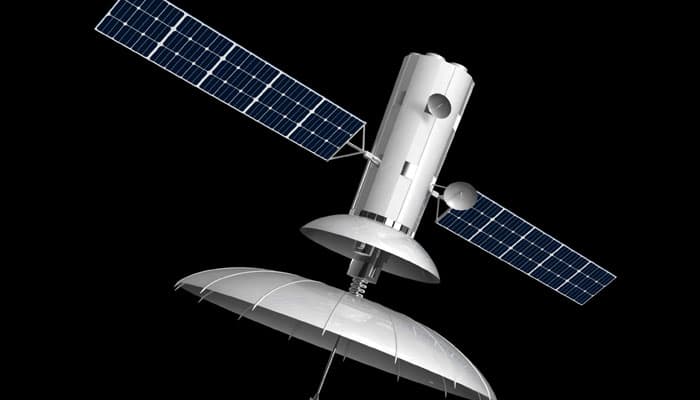New York: Small shoebox-sized satellites, flying in formation around the Earth, could estimate the planet's reflected energy with twice the accuracy of traditional monolith satellites, according to a new study led by an Indian-origin professor.
If done right, such satellite swarms could also be cheaper to build, launch and maintain.
Sreeja Nag, a former graduate student in Massachusetts Institute of Technology's (MIT) department of aeronautics and astronautics, simulated the performance of a single large, orbiting satellite with nine sensors and compared it with a cluster of three to eight small, single-sensor satellites flying together around the Earth.
The team found that clusters of four or more small satellites were able to look at a single location on Earth from multiple angles and measure that location's total reflectance with an error that is half that of single satellites in operation today.
According to Nag, such a correction in estimation error could significantly improve scientists' climate projections.
“If we can estimate the reflectance of different surface type, globally and more accurately which a cluster of satellites would let you do, then at least you've solved one part of the climate puzzle,” said Nag in a paper published online in the journal Acta Astronautica.
Today, satellites that measure the amount of light reflected from the Earth do so with multiple cameras arranged on a single satellite.
For example, NASA's Multi-angle Imaging SpectroRadiometer (MISR) instrument on the Terra satellite houses nine cameras that take images of the Earth from a fan-like arrangement of angles.
According to Nag, the drawback of this design is that the cameras have a limited view, as they are not designed to change angles and can only observe within a single plane.
Instead, the team proposes a cluster of small satellites that travel around the Earth in a loose formation.
"Over time, the cluster would cover the whole Earth, and you'd have a multiangular, 3-D view of the entire planet from space which has not been done before with multiple satellites," Nag noted
There's another big advantage to monitoring the Earth with small satellites: less risk.
“You can launch three such units and start operating and then put three more up in space later -- your performance would improve with more satellites," Nag added.
















